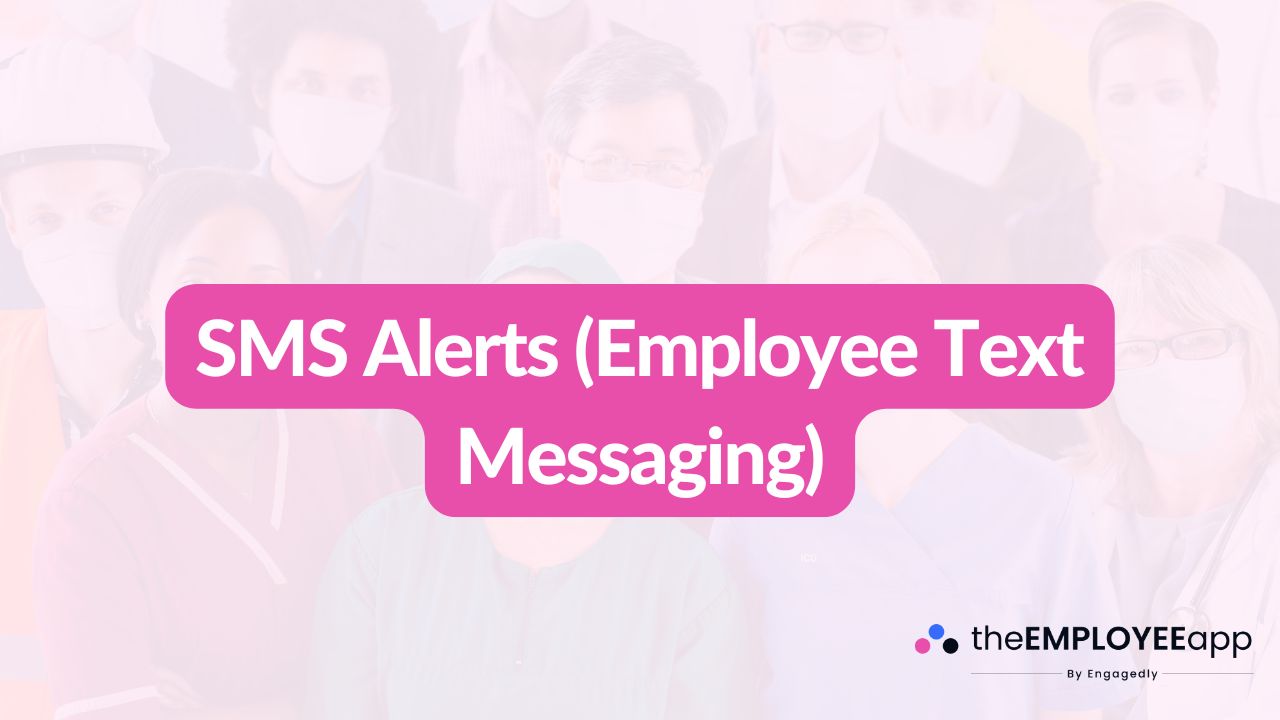
SMS Alerts (Employee Text Messaging)
SMS alerts (employee text messaging) refer to short text messages sent directly to employees’ mobile devices to quickly share important updates, reminders, or urgent notifications. Unlike emails or intranet updates that employees may overlook, SMS alerts reach people instantly, wherever they are. This makes them one of the most reliable tools for ensuring employees receive time-sensitive communication.
An SMS alert is usually concise, under 160 characters, and designed to grab attention immediately. Messages can range from reminders about upcoming meetings, company announcements, shift changes, or even emergency alerts that require fast action. For organizations with frontline, deskless, or remote employees, SMS alerts bridge communication gaps and ensure critical information is never missed.
Why SMS Alerts Matter in the Workplace
The modern workforce is increasingly mobile. Not every employee sits at a desk with consistent access to email or intranet platforms. For frontline workers, delivery staff, or field teams, SMS alerts are often the only guaranteed way to communicate in real time. This immediacy ensures messages don’t get buried in inboxes or delayed by less direct communication methods.
SMS alerts also help companies meet employees where they are. Text messages are opened more quickly than emails and usually within minutes of delivery. This means employees stay informed, aligned, and responsive, even when they’re on the move. For critical updates—like safety alerts, urgent reminders, or last-minute schedule changes—SMS alerts are the fastest path to awareness.
Key Uses of Employee Text Messaging
Organizations use SMS alerts in a variety of ways, including:
Emergency notifications: Alerting employees about weather closures, security issues, or urgent safety instructions.
Shift and scheduling updates: Sending reminders for shift changes, covering absences, or confirming work hours.
Company announcements: Sharing organizational updates, policy changes, or leadership messages.
Event reminders: Notifying employees about upcoming meetings, town halls, or training sessions.
Employee engagement: Sending quick morale boosters, recognition messages, or wellness reminders.
Benefits of SMS Alerts for Employees
Speed and reliability: Text messages are delivered instantly and are rarely ignored.
High engagement: SMS messages have some of the highest open and response rates compared to other communication methods.
Accessibility: Every employee with a mobile phone can receive alerts, no app or login required.
Improved safety: For crisis communication, SMS ensures fast delivery of critical instructions.
Stronger connections: Text alerts make employees feel informed and valued, especially when updates are relevant to their roles.
Best Practices for Employee SMS Alerts
To maximize the effectiveness of SMS alerts, organizations should follow a few best practices:
Keep messages short and clear: SMS alerts should be simple, direct, and easy to act on. Avoid unnecessary details.
Use for urgent or important communication: Reserve text alerts for messages that truly require quick attention to avoid alert fatigue.
Segment your audience: Send targeted messages to specific groups of employees rather than blasting the entire organization with irrelevant updates.
Respect timing: Schedule alerts thoughtfully. Non-urgent texts should be sent during working hours.
Provide a clear action: If employees need to respond, join a meeting, or take a step, make sure instructions are obvious.
Maintain compliance and consent: Employees should opt in to receive SMS alerts, and organizations should respect privacy and data security.
The Future of Employee SMS Alerts
As technology evolves, SMS alerts continue to play a crucial role in internal communication strategies. While apps and collaboration platforms are gaining popularity, SMS remains unmatched in reach and immediacy. In fact, many modern communication platforms integrate SMS alerts into their systems, combining them with mobile apps, push notifications, and email to provide a multi-channel experience.
Artificial intelligence and automation are also shaping the future of employee text messaging. Smart systems can schedule reminders, send personalized updates, and escalate urgent alerts without requiring constant manual oversight. This makes SMS an even more strategic tool for keeping employees informed and connected.
In today’s fast-paced workplace, SMS alerts (employee text messaging) offer organizations a simple, effective, and reliable way to reach employees instantly. Whether it’s a safety update, a schedule change, or an important announcement, SMS ensures the right information gets to the right people at the right time.
